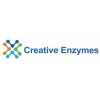Cat No.
NATE-0173
Description
Cathepsin G is an enzymatic protein belonging to the peptidase or protease families. In humans, it is coded by the CTSG gene. The protein encoded by this gene, a member of the peptidase S1 protein family, is found in azurophil granules of neutrophilic polymorphonuclear leukocytes. The encoded protease has a specificity similar to that of chymotrypsin C, but it is most closely related to other immune serine proteases, such as neutrophil elastase and the granzymes. Cathepsin G may participate in the killing and digestion of engulfed pathogens, and in connective tissue remodeling at sites of inflammation. It also localizes to Neutrophil extracellular traps (NETs), via its high affinity for DNA, an unusual property for serine proteases. Transcript variants utilizing alternative polyadenylation signals exist for this gene.
Abbr
CTSG, Native (Human)
Alias
CTSG; CG; CATG
Source
Human Neutrophils
Species
Human
Form
Liquid
Enzyme Commission Number
EC 3.4.21.20
Bio-activity
> 5 U/mL
CAS No.
56645-49-9
Appearance
Clear, colorless solution
Purification
> 96% (SDS-PAGE)
Specificity
> 5 U/mg protein
Unit Definition
One unit will hydrolyze one micromole of succinyl-alanine-alanine-proline-phenylalanine-p-nitroanilide per minute at 37°C and pH 7.5.
Gene Name
CTSG cathepsin G [Homo sapiens]
Synonyms
CTSG; cathepsin G; CG; CATG; EC 3.4.21.20; chymotrypsin-like proteinase; neutral proteinase
GeneID
1511
mRNA Refseq
NM_001911
Protein Refseq
NP_001902
MIM
116830
UniProt ID
P08311
Chromosome Location
14q12
Pathway
ACE Inhibitor Pathway, organism-specific biosystem; Activation of Matrix Metalloproteinases, organism-specific biosystem; Amoebiasis, organism-specific biosystem; Amoebiasis, conserved biosystem; Degradation of the extracellular matrix, organism-specific biosystem; Diabetes pathways, organism-specific biosystem; Disease, organism-specific biosystem
Function
heparin binding; peptidase activity; serine-type endopeptidase activity





